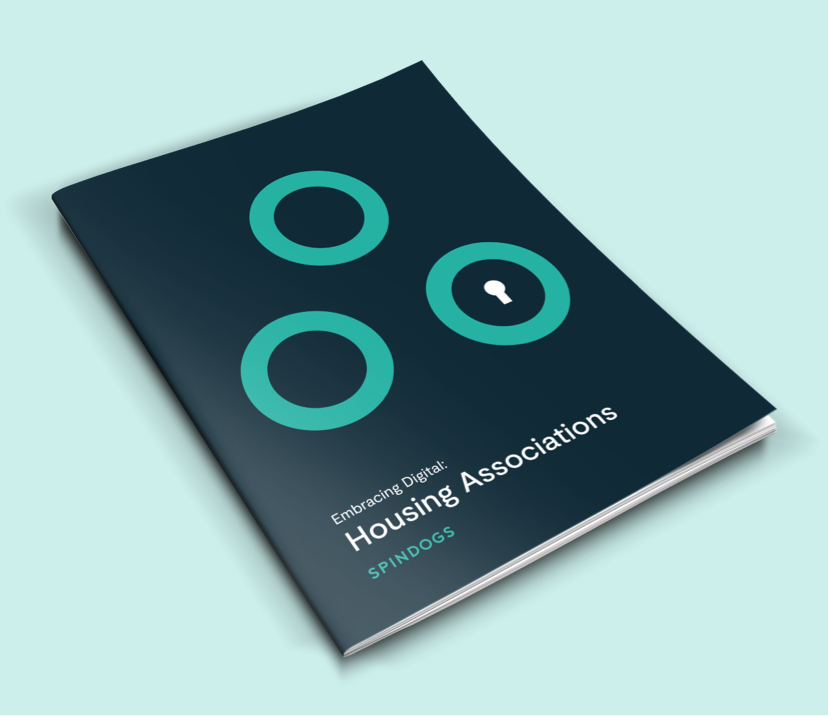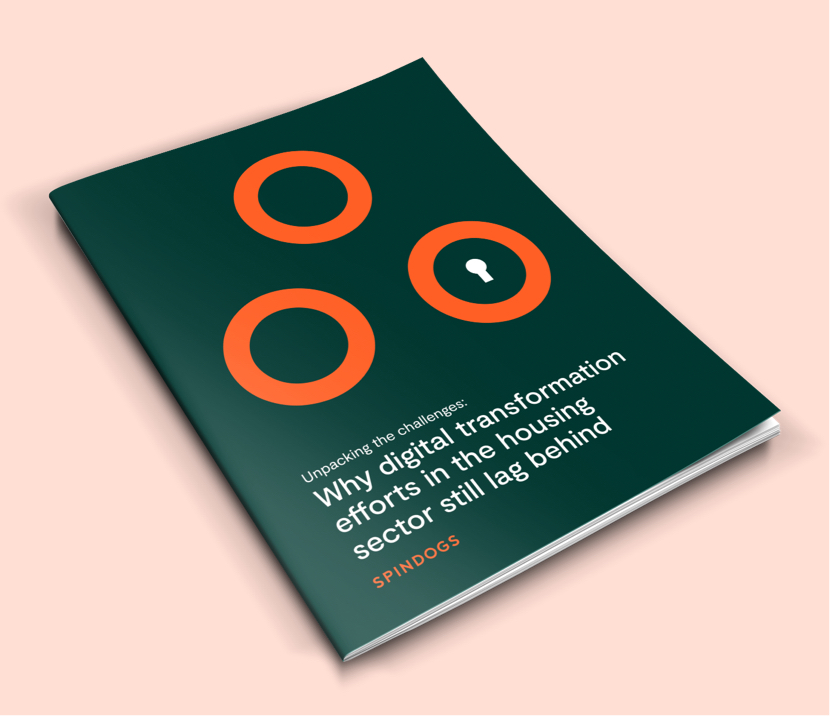Digital transformation presents an ongoing and pressing challenge for many housing associations. With the rapid advancement of technology, pressure of investors, and increasing digital expectations of tenants, there is mounting pressure on housing associations to start their digital transformation journey before they are left behind. But for those leading housing associations, initiating digital strategies can be a daunting process that requires careful planning, execution and commitment. So what should be on your agenda when it comes to starting your digital transformation journey?

Digital inclusion
Digital inclusion means giving tenants the capability to use internet-based self-service platforms to reach their landlord and access tenant services. In any digital transformation project, inclusion serves as the vital foundation for housing associations. Seamlessly connecting legacy systems is also an essential aspect of digital transformation, but the ultimate success lies in achieving seamless communication with tenants.
Over the past few years, the housing sector has witnessed a remarkable drive towards digital inclusion. The COVID-19 pandemic has further accelerated the adoption of technologies, propelling us several years ahead in this area. Significant strides have been made in bridging the digital divide gap, with many housing associations and tenants alike, embracing digital communication with enthusiasm, but despite these advancements, there remains a considerable percentage of tenants who have shown reluctance to embrace digital channels and it is important that these tenants are not left behind. Ensuring their inclusion and accessibility to digital services continues to be a pivotal task moving forward. There have been substantial advancements in product development and diverse avenues for seamless digital communication, and while some tenants may not be ready to engage on digital platforms, it’s important to recognise that telephone technology has advanced significantly, enabling tenants to accomplish many tasks using their telephone.

"55% of companies without a digital transformation plan believe they have less than a year before they start losing market share. 59% of companies that haven’t yet started the process are afraid it might be too late for them."
Digital Transformation
What digital transformation means and looks like can be different for every housing association. For some, it may involve an extensive 18-month pilot project, while others view it as just another stepping stone towards progress. For us, digital transformation is the means of digitally creating business processes to replace manual processes and what this looks like in practice depends on the nature and context of your housing associations goals and objectives.
Choosing to embark on a digital transformation journey can be an exciting yet daunting venture and it’s important to acknowledge that it comes with its challenges and stepping into the unknown can cause discomfort for stakeholders and investors, but the pay off can be huge. Here are some key steps to follow to ensure your digital transformation journey is set up to be as successful as possible:
1. Create a business case for change:
By creating a business case for change, housing associations can paint a clear picture of the reasons, risks, benefits and expected outcomes associated with digital transformation. This transparency allows stakeholders to make informed decisions, understand the impact the work will have on the business and provides a roadmap for the successful implementation of the project.
2. Create a vision for the future:
Before diving into the transformation process, it’s essential to have a clear vision of where the company wants to be in the future. Define the goals and objectives of the transformation, envisioning the desired outcomes. A well-defined vision will serve as a guiding light throughout the digital transformation journey, helping to align efforts and resources effectively.

3. Build a dedicated team
The importance of having dedicated internal resource for projects of this magnitude are hugely underestimated. Digital transformation requires a dedicated team that oversees and manages the entire project. This team can be a mix of internal or external resources, but having an internal team that can make decisions and work closely with external providers is crucial. The team should be empowered to drive the project forward, make decisions, and engage with stakeholders effectively.
4. Solve one problem
Taking on a massive digital transformation initiative can be overwhelming. To reduce risks and build confidence, start with a pilot project or discovery phase that is focused on solving a specific problem or addressing a particular need. This approach allows stakeholders to witness tangible results and learn from the process, building trust and momentum for the broader transformation journey.

5. Validate solution and update roadmaps
After the successful completion of the pilot project or discovery phase, it is essential to validate the solutions and learnings derived from it. This stage provides an opportunity to fine-tune the transformation strategy and take a look at the bigger picture, incorporating feedback, and making necessary adjustments. Updating roadmaps ensures that the transformation remains aligned with the evolving business landscape and technology trends.
6. Set goals and measure progress:
Throughout the digital transformation journey, it is crucial to set clear, measurable goals, and regularly monitor progress. Key performance indicators (KPIs) should be established to track the impact of the transformation on various aspects of the business, such as tenant and investor satisfaction, operational efficiency, and revenue growth. By closely monitoring the project’s success, businesses can make informed decisions and adapt to changes effectively.

Digital transformation is a challenging but necessary process for housing associations to thrive in today’s digital economy. By following the outlined steps, businesses can significantly increase their chances of a successful transformation.

"Companies with digital-first strategies are 64% more likely to reach their business goals than their competitors"
Digital Team Augmentation
Team augmentation allows suppliers or external teams to establish sustainable and long-term partnerships with their clients. The primary goal is to work together in tandem, and fill in the knowledge gaps to compliment their internal teams and align with their digital transformation strategy and goals. Even larger housing associations may face challenges in possessing all the necessary skill sets required for a successful digital transformation, such as UX/UI designers, project managers, and developers. This is where a digital team augmentation proves its worth, as outsourced suppliers become an embedded part of your team and housing associations can receive valuable additional support where it needs it. Having a versatile, and well-rounded team ensures the successful execution of projects, enabling businesses to optimise their operations effectively and gain competitive advantage required to thrive in the digital landscape.
Embracing digital transformation is not just about adopting new technologies; it’s a cultural shift that requires collaboration, adaptability and a commitment to continuous improvement, and it won’t happen overnight. By approaching digital transformation with the right mindset, and meticulous planning, housing associations can reap the benefits of sustainable growth, positive tenant relationships, streamlined processes and craft their own digital transformation success story.

Let's chat
To find out more about our work with Housing Associations, take a look at our Housing Association sector page, download our Housing Sector paper or get in touch. We’d love to chat about your challenges and how we can help shape the future of your housing associations through digital transformation.




